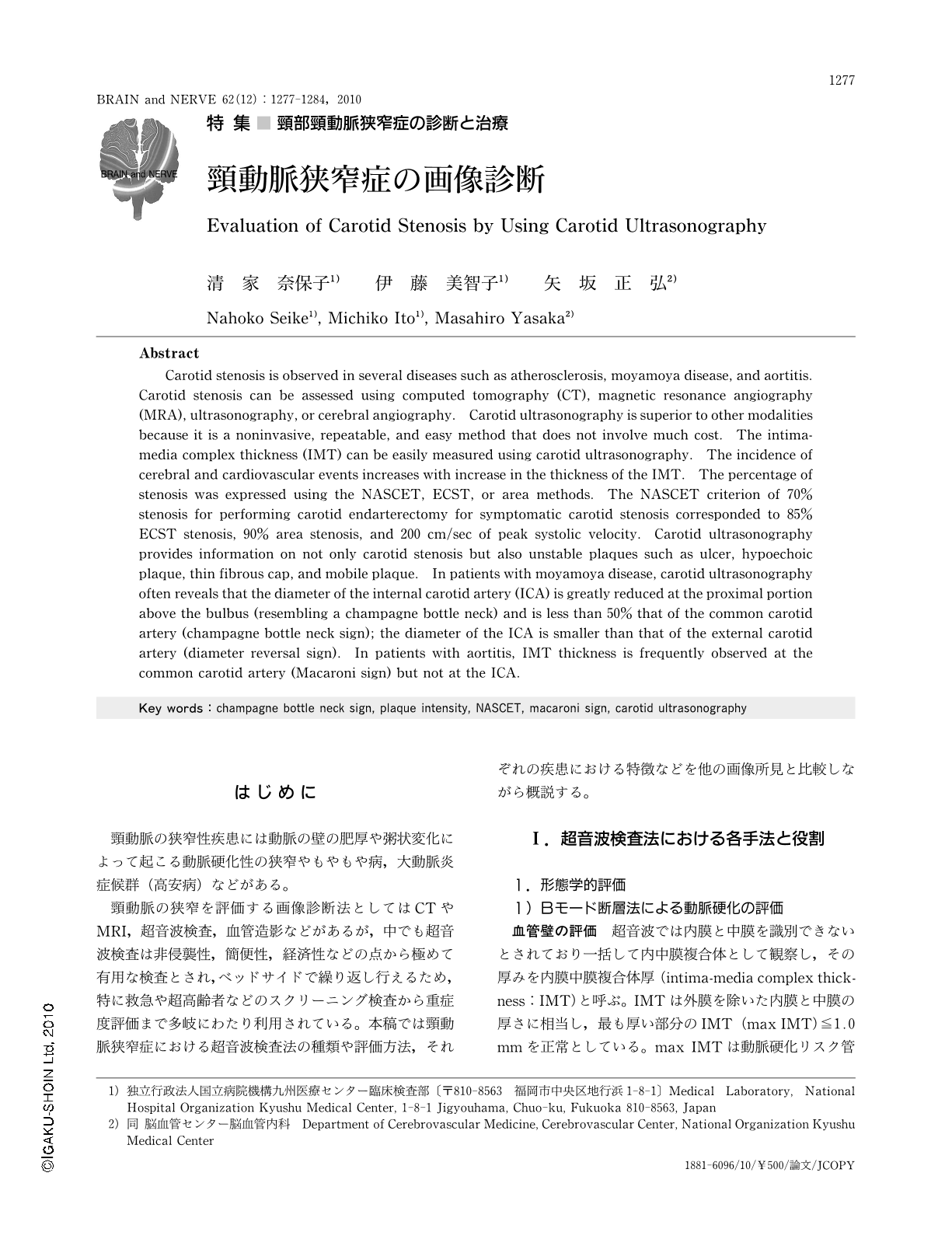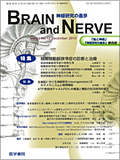Japanese
English
- 有料閲覧
- Abstract 文献概要
- 1ページ目 Look Inside
- 参考文献 Reference
はじめに
頸動脈の狭窄性疾患には動脈の壁の肥厚や粥状変化によって起こる動脈硬化性の狭窄やもやもや病,大動脈炎症候群(高安病)などがある。
頸動脈の狭窄を評価する画像診断法としてはCTやMRI,超音波検査,血管造影などがあるが,中でも超音波検査は非侵襲性,簡便性,経済性などの点から極めて有用な検査とされ,ベッドサイドで繰り返し行えるため,特に救急や超高齢者などのスクリーニング検査から重症度評価まで多岐にわたり利用されている。本稿では頸動脈狭窄症における超音波検査法の種類や評価方法,それぞれの疾患における特徴などを他の画像所見と比較しながら概説する。
Abstract
Carotid stenosis is observed in several diseases such as atherosclerosis,moyamoya disease,and aortitis. Carotid stenosis can be assessed using computed tomography (CT),magnetic resonance angiography (MRA),ultrasonography,or cerebral angiography. Carotid ultrasonography is superior to other modalities because it is a noninvasive,repeatable,and easy method that does not involve much cost. The intima-media complex thickness (IMT) can be easily measured using carotid ultrasonography. The incidence of cerebral and cardiovascular events increases with increase in the thickness of the IMT. The percentage of stenosis was expressed using the NASCET,ECST,or area methods. The NASCET criterion of 70% stenosis for performing carotid endarterectomy for symptomatic carotid stenosis corresponded to 85% ECST stenosis,90% area stenosis,and 200 cm/sec of peak systolic velocity. Carotid ultrasonography provides information on not only carotid stenosis but also unstable plaques such as ulcer,hypoechoic plaque,thin fibrous cap,and mobile plaque. In patients with moyamoya disease,carotid ultrasonography often reveals that the diameter of the internal carotid artery (ICA) is greatly reduced at the proximal portion above the bulbus (resembling a champagne bottle neck) and is less than 50% that of the common carotid artery (champagne bottle neck sign); the diameter of the ICA is smaller than that of the external carotid artery (diameter reversal sign). In patients with aortitis,IMT thickness is frequently observed at the common carotid artery (Macaroni sign) but not at the ICA.

Copyright © 2010, Igaku-Shoin Ltd. All rights reserved.


